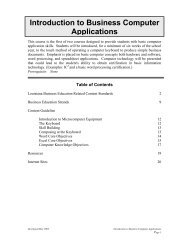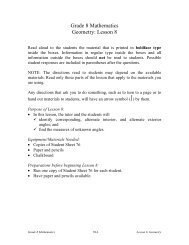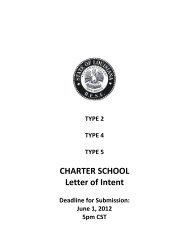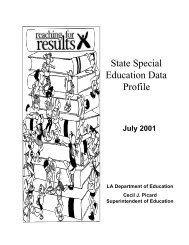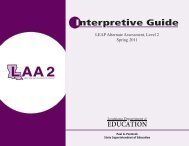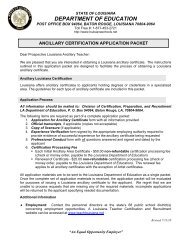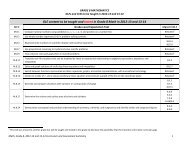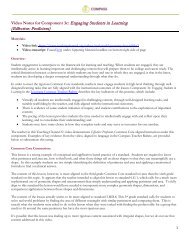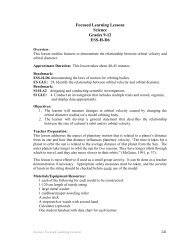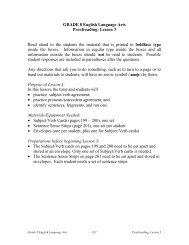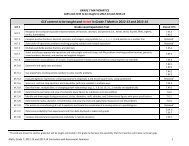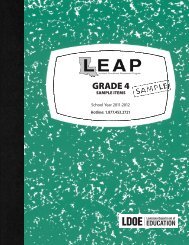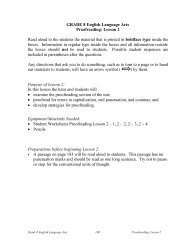School Improvement - Louisiana Department of Education
School Improvement - Louisiana Department of Education
School Improvement - Louisiana Department of Education
You also want an ePaper? Increase the reach of your titles
YUMPU automatically turns print PDFs into web optimized ePapers that Google loves.
5. Create detailed activities that will lead to each desired outcome.<br />
6. Ensure that the following are included for each activity: who, what, how, frequency, purpose/focus <strong>of</strong> the<br />
training/activity.<br />
7. Indicate the person responsible, projected start and completion dates, estimated cost, funding source and<br />
procedures for evaluating Indicators <strong>of</strong> Implementation.<br />
8. Designate the type <strong>of</strong> activity (family and community involvement [FCI], literacy activities [LA], numeracy<br />
activities [NA], positive behavior support [PBS], pr<strong>of</strong>essional development [PD], safe and drug free schools<br />
[SDFS], and pre‐K to 12 transition activities [TA]).<br />
9. Choose short – term (formative) procedures that will measure the effectiveness <strong>of</strong> each indicator to ensure<br />
that the strategies are being implemented.<br />
10. Choose long‐term (summative) procedures that will determine if goals have been attained.<br />
GUIDING QUESTIONS<br />
1. Are the activities linked to the Indicators <strong>of</strong> Implementation and the Desired Outcomes?<br />
2. What expertise, materials/equipment, and/or services (internal and/or external) are essential<br />
for successful implementation <strong>of</strong> the Action Plan?<br />
3. Does the language <strong>of</strong> the activity provide the following information: who, what, how, with what<br />
frequency, purpose/focus?<br />
4. Are the activities arranged in logical, sequential order?<br />
5. How do the school administrator(s) and staff share responsibility for the implementation,<br />
feedback, follow‐up, and support <strong>of</strong> the activity?<br />
6. Are activities included to address the needs <strong>of</strong> all learners (struggling learners, gifted/talented,<br />
subgroups, etc.)?<br />
7. What pr<strong>of</strong>essional development is needed for teachers to successfully implement the activities?<br />
Have initial, follow‐up and support, and job‐embedded activities been planned?<br />
8. Are activities included to incorporate family and community involvement<br />
that will directly impact student achievement and behavior?<br />
9. Are transitional activities included for all applicable grade levels (Pre‐K to K, Elementary to<br />
Middle <strong>School</strong>, Middle <strong>School</strong> to High <strong>School</strong>, High <strong>School</strong> to Postsecondary)?<br />
10. What procedures will be used to measure the effectiveness <strong>of</strong> each activity to ensure that the<br />
strategies are being implemented?<br />
<strong>Louisiana</strong> Measure Of Progress (LAMP)<br />
The <strong>Louisiana</strong> Measure <strong>of</strong> Progress (LAMP) is a tool used by the school for frequent review <strong>of</strong> student<br />
performance (e.g., progress monitoring, benchmark assessments).<br />
Examples:<br />
• Percentage <strong>of</strong> students attaining Benchmark on DIBELS assessment in<br />
Grade 1<br />
• Percentage <strong>of</strong> students attaining Benchmark on Read 180 assessment in<br />
Grade 6<br />
41



